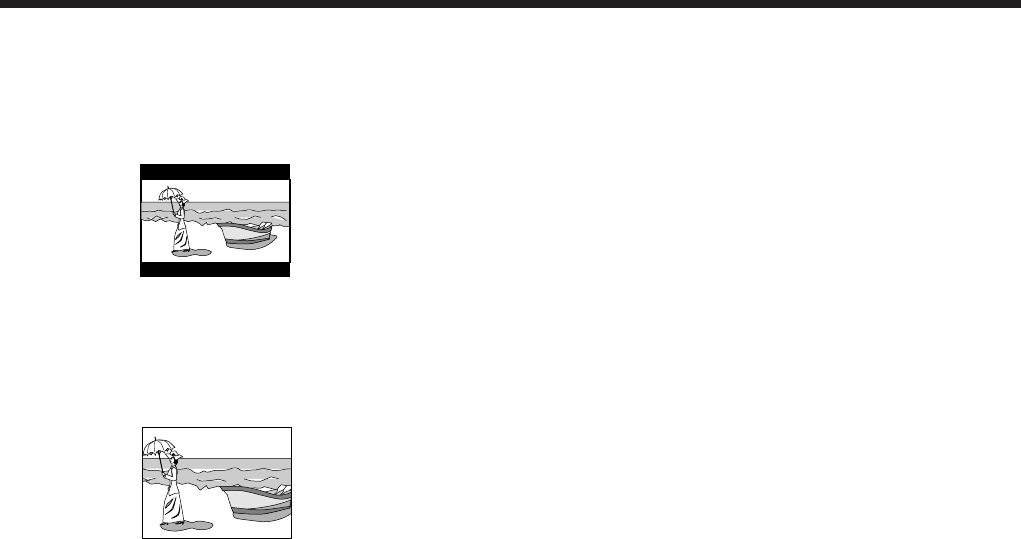
– 49 –
Appendix G—Glossary
4:3 Letter Box screen
This is one method for displaying a wide screen picture on a
conventional sized (4:3) TV. While viewing a wide screen picture,
the black bars appear on the top and the bottom of the screen.
4:3 Pan-Scan screen
This is one method for displaying a wide screen picture on a
conventional sized (4:3) TV. While viewing a wide screen picture,
the left and right edges of the pictures will not be shown on the
screen.
Dolby Digital
This is a digital audio compression technology that was developed
by Dolby Laboratories. Dolby Digital encoding method (so-called
discrete 5.1 channel digital audio format) records and compresses
the left front channel, right front channel, center channel, left rear
channel, right rear channel, and LFE channel (total 6 channels, but
LFE channel is counted as 0.1 channel, therefore called 5.1
channels) signals digitally. Each channel is completely independent
from other channel signals to avoid interference, therefore, you can
obtain much better sound quality with stereo and surround effects.
To reproduce these original surround signals, you need to connect an
amplifier or a decoder compatible with Dolby Digital.
DTS Digital Surround
Another discrete 5.1 channel digital audio format, available on CD,
LD, and DVD software, developed by Digital Theater Systems, Inc.
Compared to Dolby Digital, audio compression rate is relatively low.
This fact allows DTS Digital Surround format to add breadth and
depth to the reproduced sounds. As a result, DTS Digital Surround
features natural, solid and clear sound.
To reproduce these surround signals, you need to connect an
amplifier or a decoder compatible with DTS Digital Surround.
Linear PCM
This is a digital recording format that is used for audio CDs.
Playback Control (VCD)
When a VCD has the PBC (Playback Control) function, you can
enjoy menu-driven operations and high-resolution still pictures.
Sampling Frequency, Quantization Bits
When analog signals are converted into digital signals, they are
divided into many points and digitized. This dividing method is
called “sampling.” The sampling frequency indicates how many
points one second is divided into – for example, for CD sound, one
second is divided into 44100 points since its sampling frequency is
44.1 kHz. On the other hand, the number of quantization bits
indicates the volume size used to memorize each divided point.
The larger this number is, the clearer the sound can be reproduced.
Titles and Chapters (DVD)
A DVD is divided into several titles (large divisions), and
each title is divided into chapters (smaller divisions).
These divisions are assigned their particular numbers, so that
they are easily accessed.
Tracks (VCD, CD)
VCDs and CDs are divided into tracks. Each track has its own
number so that it is easily accessed.
EN38-50.MX-DVA9[J]_1 01.7.3, 10:26 AM49


















